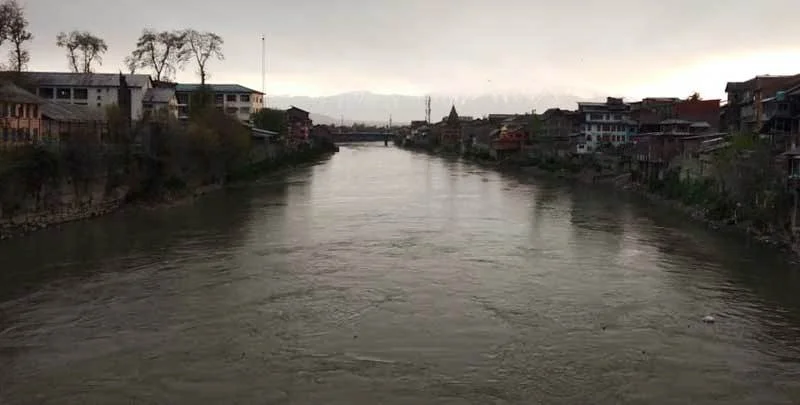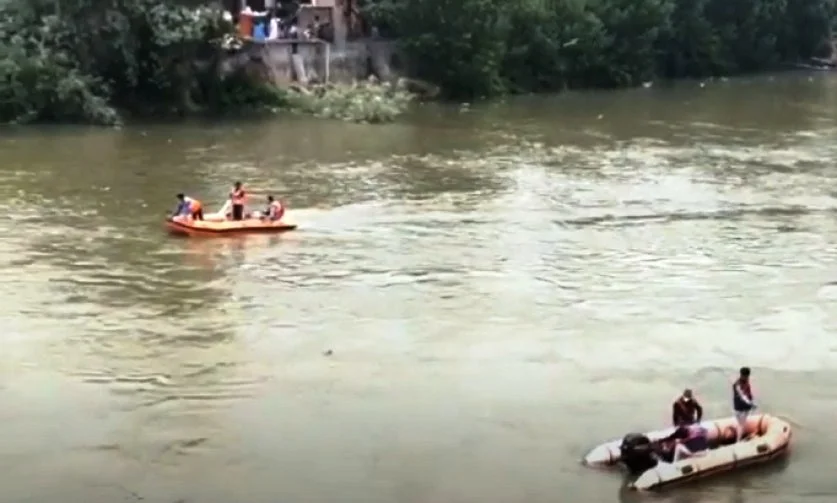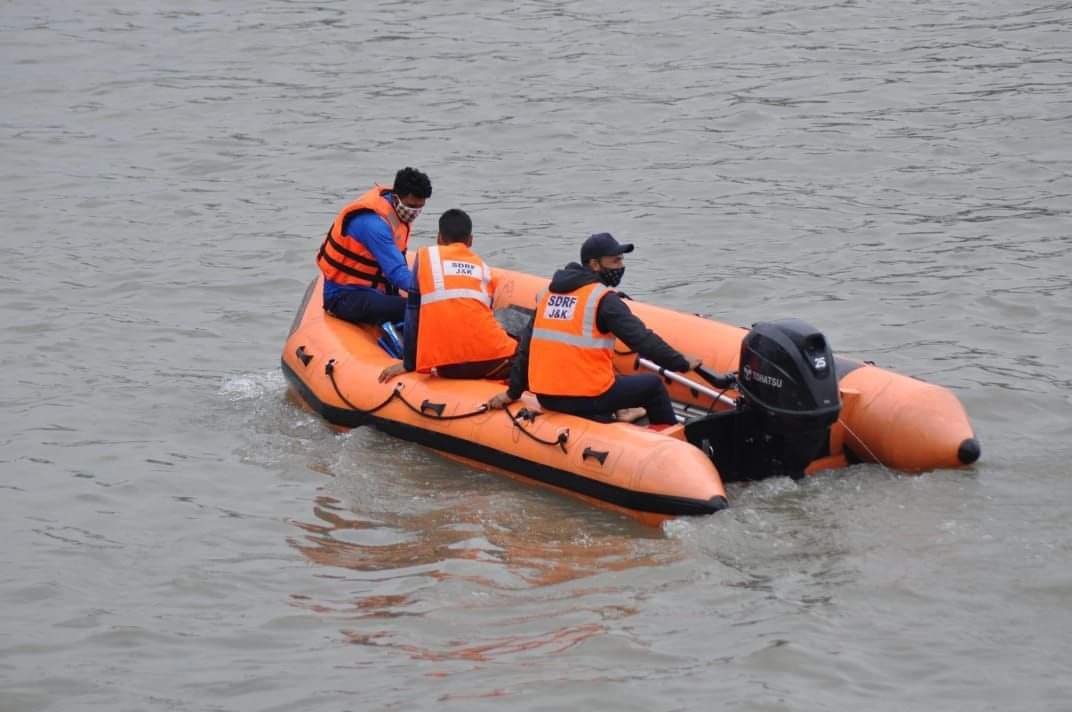
Grappling with an ‘epidemic of suicides’, a Srinagar pocket is facing the heat of the make-believe notions attached with the growing life attempts in the valley.
By Aaqid Andrabi
FIRST came a boy next door, says Raja on the banks of the river Jhelum in Noorbagh area of Srinagar. He quietly stopped his bicycle, placed it at one side of the bridge and stared at the troubled waters at length. “And then he did the unthinkable,” Raja, a feisty lady in her mid-forties, recalls. “It never stopped after that.”
That jump from the Sun City’s Cement Bridge created what psychiatrists had long feared—‘copycat phenomenon’.
“And since then,” continues Raja, “15 people have already jumped from this bridge within a month.”
Life before these suicidal trips was quintessential for Noorbagh — an abode of Kashmiri artisans. The pathway above the river had no sign of harm. But now, that old image has paved way to a sharp smear. The bridge now hosts grave gatherings, as people often turn up to stare and scream at the life struggling on the waters below.
“Some days back, I saw an old father sitting on this Bund, looking at the rescue operation, for days together,” Raja continues. “It broke my heart. His young son was among those who took his life here and literally broke his old father’s back.”
Some 15 minutes into this “taboo” talk and Raja is joined by her neighbour, Haleema. This mother of three children is living in the vicinity of the bridge and is feeling a searing sense of slur already.
“We don’t question those who were forced to take their own lives for whatever reasons here,” Haleema, 43, says. “But at the same time, these endless incidents need to be curbed. It’s giving us a bad name and setting a bad example for our kids. Today, most of us think ten times before scolding our children. Such is our fear now.”

The phenomenal and problematic rise in the number of suicides at the Cement Bridge is lending a bad rap to the Noorbagh and adjoining localities.
From the tabulated number of suicide attempts from the bridge, there hasn’t been a single survivor. The bridge stands at a registered height of almost 150 feet, and the water body that it spans across, too, has a consequential depth that doesn’t heave out anyone living from it.
“For the past month,” says Mushtaq Bhat, a local trader, “we’ve been witnessing a dramatic rise in the number of people who jump to their deaths from this bridge. It has become a suicide magnet of sorts with people from various areas coming here to die. It affects our businesses and gives a bad name to our neighbourhood. One would see that happening only in films, but here we are witnessing it all first hand.”
The businesses have noticed a gradual decrease since it all started, Bhat claims. “We’re worried that if this continues unabated, we might’ve to look for other means of income. Islam considers suicide a major sin, and for no fault of ours, we’ve to lug the brunt of their actions.”
Abdus Samad Mir, a member of the local masjid committee, has more or less the same to say about what’s now being referred as the ‘June jolts’.
“Our valley went by a lot of phases over the past three decades, and this inclination towards suicides is worrying for the entire valley,” Mir says. “Such things occurring in our front yard will lead to a social stigma getting stuck to us if we specifically talk about the Noorbagh neighbourhood.”
Sadly, says Mir, it has already started happening.
“A family from our neighbourhood was supposed to get their two daughters married. Upon learning about the suicides happening, the in-laws of one of these girls almost called off the marriage citing the suicides and how it speaks about the locality it’s happening in.”
It took a lot of pleading and begging to convince them to change that decision of theirs, Mir says. “I cannot blame them for wanting to call it off since I too may have wanted not to be associated with such a place where suicides are a common occurrence.”
The growing number of suicides lends an air of supernatural phenomena to the bridge as well.
Some locals believe that there is something bigger at work than just ‘mere depression and desperation’.
“This cannot just be about an individual being desperate enough to end his/her life because of some personal issues,” reckons Shabir Nazir, a local resident.
“I think some supernatural forces attract some unfortunate individuals to the bridge and coerce them into jumping off it and end their lives. It cannot be just a coincidence that people come from all over and choose this place to meet their ends. There are scores of other places all over the valley that can prove to be fatal if one chooses it to be so.”
Shabir even suggests an exorcism to ward off the ‘evil spirits’ of the bridge.
However, not many are buying these arguments.
“The more likely reason is that the bridge is easily accessible to jump off,” believes Muneeb Hussain, an engineering student, from Noorbagh.
“You can notice in the name of fencing that some pipes on either side of the bridge are barely two feet in height. An individual with suicidal tendencies can easily access it and jump over. It has more to do with the accessibility and psychological attraction it creates inside a disturbed mind than anything supernatural.”
The easier solution would be to fence it off properly and not to be so accessible to anyone, Muneeb says.
“Most of the individuals who killed themselves on this bridge were living in the adjoining areas or living in rented accommodations in our locality. The bridge presented itself as a good opportunity to carry out such an act.”

In the face of these suicidal jumps, a unanimous agreement among the locals is that the district administration needs to take this situation seriously and fence off the bridge at the earliest.
“It has become a colossal nuisance for us,” says Bashir Ahmad, a local cabdriver. “The sooner the administration takes note of it and builds a fence around it, the better.”
Other bridges in the city, he adds, were potential suicide points, and fence construction was carried around them. “Why can’t the same be done here? Why is it taking so long for the administration to wake up from their slumber? We’ve talked to the officials about this issue, and hopefully, a resolution will follow soon.”
Sitting on the Jhelum banks and discussing the last month’s shocking jumps from the Cement Bridge, Raja and Haleema are hoping that the “much-needed” bridge fencing would soon stall these life attempts.
“It’s our collective call to stop these suicides as well as end this smear campaign created by those nonsensical reports calling Cement Bridge as a ‘suicide point’ in Kashmir,” Raja says.
Follow this link to join our WhatsApp group: Join Now
Be Part of Quality Journalism |
Quality journalism takes a lot of time, money and hard work to produce and despite all the hardships we still do it. Our reporters and editors are working overtime in Kashmir and beyond to cover what you care about, break big stories, and expose injustices that can change lives. Today more people are reading Kashmir Observer than ever, but only a handful are paying while advertising revenues are falling fast. |
| ACT NOW |
| MONTHLY | Rs 100 | |
| YEARLY | Rs 1000 | |
| LIFETIME | Rs 10000 | |











